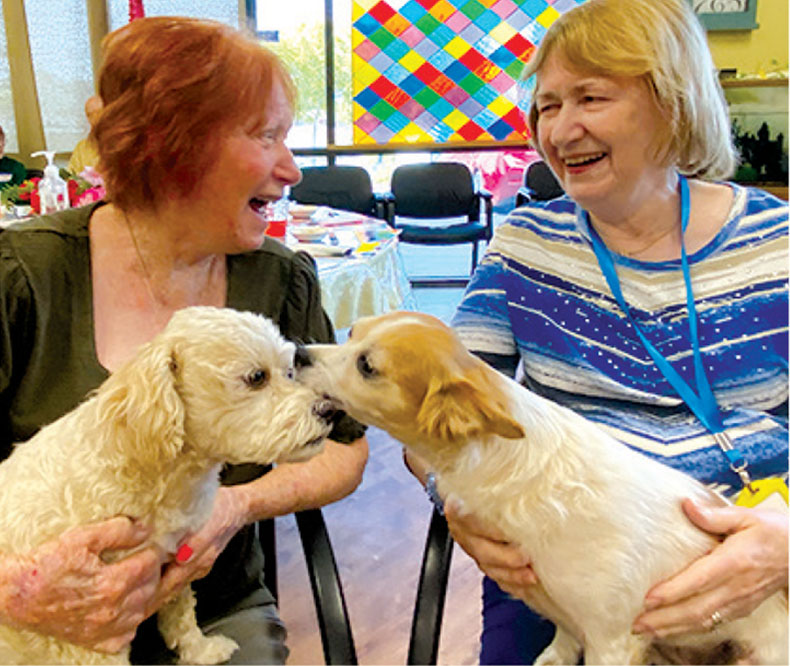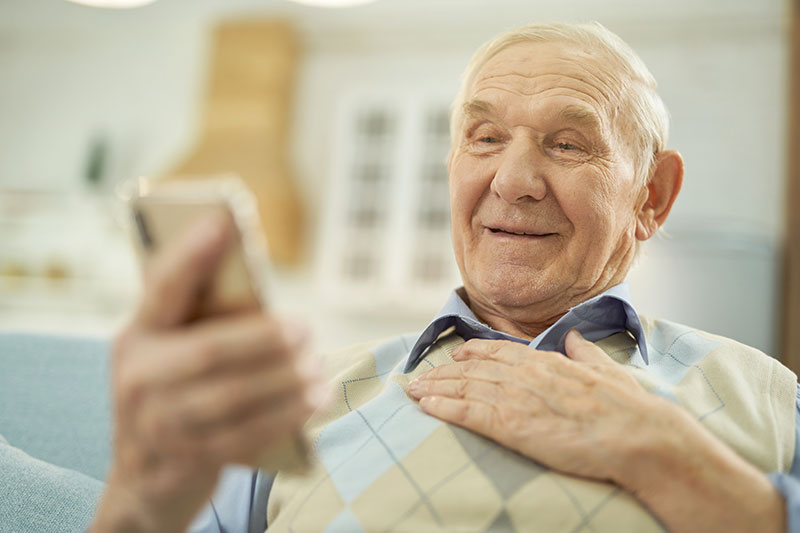By Trina Kleist
Emma Wilson was an amazing mom. She raised her only child with love and made sure she received a good education.
But when Wilson, now 84, started showing signs of dementia, her daughter, Latrice Mahdi, brought Wilson into her own home. You could call Mahdi the ham in the generational sandwich. At 43, Mahdi has three children of her own at home, plus her husband and a full-time job as a speech therapist.
Caring for her mother has been “beautiful” in many ways, including walks together and watching Wilson grow closer to her grandchildren. At the same time, Mahdi said, “it honestly has been very mentally and emotionally draining. It’s probably the hardest thing I’ve ever gone through.”
Latrice Mahdi knew she needed help. She found Daycation for Seniors, a socially focused daycare center for adults with dementia, in Rocklin.
“You can feel when you walk in, the people that work there, they’re just very, very sweet,” Mahdi said. “Once (my mother) comes in, they know she’s confused. They’ll say, ‘Hi Emma!’ and hug her, and that calms her down. They know how to ease her into the transition of coming in.”
Daycation: “Bridge” in Senior Care
Co-owners Paul Kelly and Yvonne Mitchell had families like the Mahdis in mind when they opened Daycation for Seniors in 2014. Together, they bring nearly 55 years of experience in senior care. During those years, Kelly noticed many people living in residential care facilities didn’t need such a high level of care. Their families could care for their loved ones at home – and save enormous expense – if they had more support, he said.
“We’re a bridge in their care,” Kelly said, a service that can provide what’s needed, while perhaps postponing the need for a higher level of attention. Daycation offers a wide range of activities that help participants stay mentally and physically healthy longer.
“What we offer that people really value is the social aspect. By having an opportunity to engage and reminisce with a community of friends, older adults can feel as if they’re leading a more normal and grounded life,” Mitchell added.
Fun, Stimulating Activities All Day Long
It was Jay and Martha Stevans’ doctor who recognized Martha was in the early stages of dementia, and recommended they look for assistance, Jay Stevans said. For 50 years, Martha Stevans had taken care of their family and home, driven everywhere, cooked and shopped, while he led a large church. Dementia was “not the way of life that I had envisioned” in their later years, said Jay Stevans, now 82.
The Stevans toured Daycation’s home-like facility, then tried a free preview day. Mornings start with chair exercises – Zumba and tai chi help people stay flexible so they can perform simple tasks. Exercises with large balls reinforce motor skills that help maintain balance. Painting and crafts stimulate the eye-brain-hands connection. Musicians come in four days a week to play and sing, and the staff – certified nursing assistants–sing and dance with the participants.

Daycation has service dogs, guinea pigs and a bearded dragon for guests to enjoy daily. In addition, a mobile petting zoo comes once a month with a variety of animals to share, including miniature horses, rabbits and alpacas, Mitchell said.
Games such as Jeopardy and bowling are modified so everyone can join in, Mitchell and Kelly added. Participants enjoy lunch at tables set with tablecloths and china, giving every meal a special feel.
“We were impressed with the place and the management,”Jay Stevans said.”When Martha (now 84) walks in, the lady at the front desk greets her warmly, gives her her name tag to put on. She walks through the room’s door and she’s greeted warmly by the personnel. People are around the tables, and off they go.
“I leave totally comfortable that, unless something very unexpected happens, there’s five hours of a very positive day for her,” Jay Stevans said.
Guest Relationships & Caregiver Respite
Martha Stevans and Emma Wilson have made friends among the other guests at Daycation. It has become part of their routines, and they look forward to going, their loved ones said.
One day, when Jay Stevans came to pick up his wife, he saw a touching scene: Martha Stevans was in a circle of other women, and they were talking and laughing. “The aide said, these three ladies, all they did all day was just sit there and talk,” Jay Stevans recalled. “They get along fantastic. It really distracts from the negative.”
Wilson enjoys the games. “She’s very competitive,” daughter Mahdi added. One afternoon, when Mahdi arrived to pick her up, Wilson shooed her off. “She says to me, ‘I’m still playing!’” Mahdi recalled, chuckling. “If someone has a parent that they are taking care of, Daycation is the answer for me,” Mahdi said. “It gives me my time with my kids. Sometimes we need that family moment. Meanwhile, I know my mom’s having a good time, and I don’t have to stress.”

